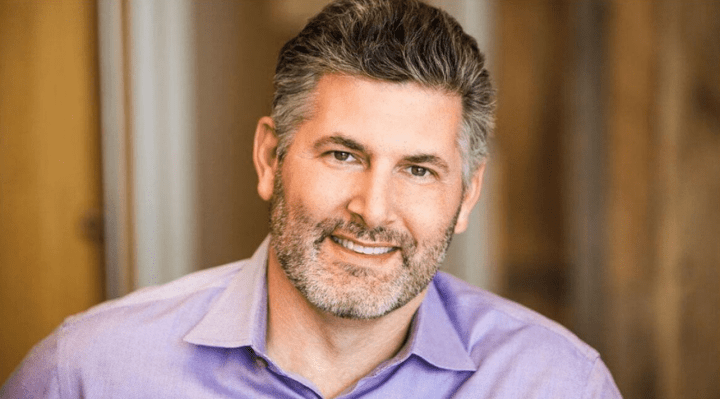Renowned Silicon Valley operator Adam Nash thinks you want to donate more than you do, and he’s about to make it dead simple for you to give more.
Such is the message we received when talking late last week with Nash, whose most recent full-time roles include as a VP at Dropbox and president and CEO of the financial advisory firm Wealthfront, but who also serves on the boards of the auto e-commerce platform Shift and with Acorns.
In fact, it’s that last role with Acorns, a micro-investing app, that informed what Nash is building now, which is a new financial platform for giving called Daffy. Freshly backed by $17.1 million in Series A funding led by Ribbit Capital, with participation from XYZ Capital, Coinbase Ventures and more than 50 notable angel investors (Reid Hoffman, Aaron Levie, Amy Chang, the list goes on), the idea is to help people to be more generous, more often.
How, exactly? Daffy provides access to what it claims is the lowest-cost, and lowest-friction, way to set up and use a donor-advised fund (DAF), a kind of 401(k) for charitable giving. With DAFs, one donates some money (or stock, or even cryptocurrencies), receiving a tax break at the time of the contribution, and that donation moves into a managed investment account, where it hopefully grows over time. At some later date, the donor direct the funds to the charity or charities of his or her choice.
DAFs have become hugely popular as a means of avoiding taxes on unrealized capital gains by both the extremely wealthy and those who perhaps aren’t billionaires but aren’t struggling to pay their bills, either. According to the National Philanthropic Trust (NPT), the average donor-advised fund account had $163,000 as of last year, and there is now enough sitting in DAFs (more than $140 billion) that grants from DAFs to qualified charities reached an estimated $34.67 billion in 2021, a 27% increase compared to 2019. The NPT called this a “high-water mark.”
Nash said Daffy intends to open up DAFs so that many more people across the economic spectrum can participate. The first step toward that end is making access to them more affordable. Whereas a customer of Schwab or Fidelity or Vanguard can right now set up a donor-advised fund, each of these financial heavyweights charges an administration fee of 0.60% of assets, which can add up over time. (Vanguard also has a minimum required donation of $25,000 to get started.)
Daffy meanwhile requires that users make a minimum $100 one-time contribution (or $10 per week until they get there), and it charges just $3 a month, or $36 per year, regardless of the dollar amount that someone is donating. That fee shoots to $20 per month if a user is also donating appreciated stock or cryptocurrency, which have “more expenses tied” to them, noted Nash. But if the assets in question are substantial, that’s still probably a good deal.
The second step toward ensuring that DAFs are adopted more widely is making them easier to access. On this front, Daffy, which is based in Los Altos, Ca., is making progress, too. In fact, the app can now be download through the Apple App Store, with Daffy claiming it is the first “fully featured” DAF available on the platform currently.
As for where the donations go to (ostensibly) grow, Daffy currently provides its customers access to nine funds but Nash said to expect many more to appear on the platform over time.
Daffy isn’t alone in tackling this big and growing piece of the economy. In addition to stalwarts like Fidelity, startups like CharityVest, a recent graduate of Y Combinator’s accelerator program, are beginning to chase after similar customers.
There’s also the question of how it survives and thrives, given its low costs. After all, it seems possible the young outfit will increasingly attract clients to the platform who might traditionally use a more expensive DAF product but who switch to Daffy to save hundreds, if not thousands, of dollars in administrative costs.
Asked about penny-pinching millionaires, Nash, who noted that Daffy already has clients with “seven-figure” portfolios, insisted that Daffy doesn’t plan to introduce another, higher-cost tier. He also made clear that Daffy does not receive lead generation fees from the funds with which it works, and that it welcomes all customers no matter their assets.
Likely, he simply sees some percentage of customers as loss leaders. Indeed, like many financial services startups, DAFs appear to be Daffy’s first step toward many other product offerings. Nash isn’t ready to fully raise the curtain, however.
“It’s definitely a wedge for something bigger but not aimed at financial services,” Nash told us last week. “This isn’t a megabank play. Our mission is to help people be more generous more often and to put money aside proactively for those less fortunate than themselves.” There are “a lot of ways that people give, there are a lot of ways that organizations raise money, and these are all areas that we’re very excited about,” he continued.
For now though, Nash is focusing his efforts entirely on turning Daffy into a daily habit for users. It’s ambitious, he acknowledges, but people establish all kinds of routines, aided by technology.
“We’re seeing more and more apps and services that are trying to help people live the life they want to live, whether it’s Calm or Headspace or some of the religious apps out there,” he noted. Many, he said, “are using services to be the type of person they want to be. We see no reason that wouldn’t apply to generosity and to philanthropy and charity.”
